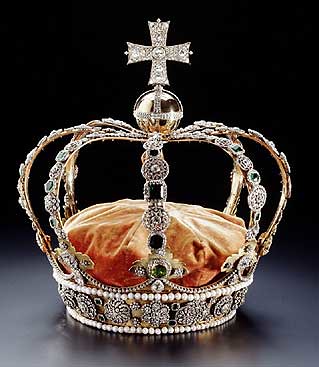 |
| King Harald (r.) at a state banquet with Camilla Duchess of Cornwall and Norway Prime Minister Jens Stoltenberg. |
King Harald V of Norway can celebrate his 78th birthday on 21st February. And he is actually down under with Queen Sonja. The royal couple arrived in Canberra from Antarctica, where he was the first monarch to set foot on the continent.
The official state visit officially kicks off on Monday 23rd February. The King and Queen will be Australia until 27th February. The main purpose of King Harald and Queen Sonja’s Australia tour is to promote Norwegian economic and business interests in the country. During their trip, the couple will be visiting both Sydney and Perth besides Canberra.
Before flying to Australia The King has been visiting Queen Maud Land – a Norwegian dependency in the Antarctic. The King was paying a visit to the Troll research station, which is celebrating ten years of year-round operations.
King Harald has been given a close-up introduction to Norwegian research in the Antarctic, learned more about the management framework of this enormous area, and experienced some of the majestic scenery of the world’s coldest continent.
Part of the King’s visit took place at the Troll observatory, an air monitoring station operated by the Norwegian Institute for Air Research. Antarctica has the cleanest air in the world, yet the impact of emissions from other parts of the globe is felt here as well. The King and his entourage were given a presentation on the work being conducted at the observatory, where important climate measurements are taken.
“I think the children of today will be much wiser than we have been,” said the King following the visit, and he pointed out that we have much more knowledge and awareness now on which to build.
King Harald also visited the Troll Satellite Station, a ground station for polar orbiting satellites. Kongsberg Satellite Services (KSTAT) owns the station, which is located not far from the Troll research station. With a similar station at Svalbard, KSTAT can deliver up-to-date climate, environmental and meteorological data to the satellites’ owners.
 |
| Kong Harald på breisen i Antarktis. |
The Troll research station carries out meteorological observations and ultraviolet radiation monitoring, and serves as a field station for various programmes on glaciology, biology and physics. Much of the research conducted here revolves around various aspects of the climate and the impacts of climate change.
Special priority is given to minimising the environmental impact of activities at the Troll research station so as not to diminish the value of Antarctica as a reference point for climate research. For example, surplus heat is not released into the environment, but is used to melt snow and ice for use as drinking water and in the central heating system. Waste that cannot be treated in any other way is compressed and transported out of the Antarctic. Electric cars are used to reduce vehicular emissions at the station.
Upgrading the Troll research station to year-round operations expanded the opportunities to conduct research and environmental monitoring, and enhanced Norway’s presence in the Antarctic.
King Harald also had the chance to experience some of the area’s majestic scenery during his visit. The Troll research station is located on the mountain known as “The Giant’s Seat”. The station is located 1 270 metres above sea level, while the highest peak on the continent is 2 370 metres above sea level. The climate at the Troll research station is more stable than along the coast, and has an annual mean temperature of about minus 25 degrees Celsius, which is considered a moderate temperature for the continent as a whole.
Following the visit to the Troll Satellite Station, the station crew took King Harald on an excursion into the landscape. Using a terrain vehicle, the team gave the King a tour of the area which included icebergs, snow formations and towering mountain peaks.
The only permanent animal life consists of small invertebrates that live under the rocks. Birdlife reaches a peak in the warmest time of the year, when the temperature may climb to about zero degrees Celsius. Large colonies of snow petrel (Pagodroma nivea)and Antarctic petrel (Thalassoica antarctica) have their breeding grounds in the Giant’s Seat, as does the South Polar skua (Stercorarius maccormicki), which is considered to be the world’s southernmost bird.
Queen Maud Land
Queen Maud Land lies on the Antarctic continent at 20° West and 45° East, and is a Norwegian dependency. The area comprises one-sixth of the continent, and is almost seven times larger than Norway. It borders the British sector on the west and the Australian sector on the east.
Source: www.norskpolarinstitutt.no
Queen Maud Land was annexed by Norway on 14 January 1939, and was named after Norway’s Queen Maud, a daughter of King Edward VII, who had died the previous year. Norway’s claim on the area was based on the country’s whaling interests and research activity. Norway had been active in polar research since the 1800s, and while whaling was gradually discontinued, Norwegian research in the Antarctic carried on. The year-round Troll research station has given Norway a stronger presence than ever on the continent.
King Harald’s visit to Queen Maud Land marks the first time that a Norwegian King has visited Norway’s dependency in the Antarctic.




No comments:
Post a Comment